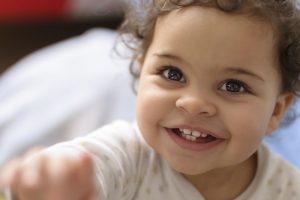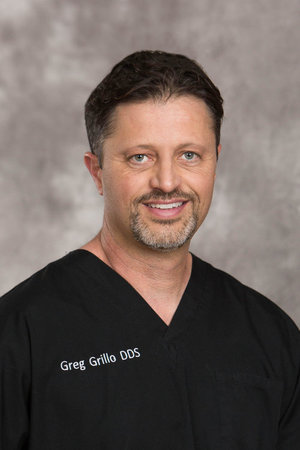How Many Teeth Do Children Have
 You probably understand that we’re born without teeth and that they grow in over time, but do you know how and when they’ll come in?
You probably understand that we’re born without teeth and that they grow in over time, but do you know how and when they’ll come in?
Also, did you know that children have a different number and kinds of teeth than adults?
Whether you’re a new parent trying to understand your child’s development or someone who’s just curious to know the answer we’ve got the answers for you. We’ve separated the information into age groups to make it easier to find the information that you need and help make it easier to understand.
Age 0 to 2 years
Believe it or not, your teeth actually start growing before you’re even born. Their main substance starts forming about six weeks after gestation. At about three or four months the hard tissues surrounding the teeth start to grow. When a baby is born, all of their teeth are formed and waiting within the gums.
Between three months and six months, though it could take as long as a year, the first teeth start to come through the gums. The front bottom teeth, called the central incisors, usually erupt first shortly followed by the ones up top. The teeth adjacent to those, the lateral incisors, come in next. By nine to twelve months the baby will have a total of eight front teeth; four on the top and four on the bottom.

During this time is when you start forming good oral hygiene habits. Begin by using about as much toothpaste as a grain of rice to brush twice a day. Children this age usually have a difficult time spitting out excess toothpaste and will swallow after brushing. This is okay in small amounts. Make sure to use fluoride toothpaste to help prevent tooth decay.
Age 2 to 5 years
Teeth continue to erupt, usually in pairs, until 2 ½ to 3 years of age. The last teeth to come in are the upper molars. In total, toddlers will have twenty teeth.
These first teeth are known by a few different names: baby teeth, primary teeth, deciduous teeth. They’re essentially placeholders for permanent stronger teeth that will come in later.
Even though baby teeth are temporary, they still need to be properly maintained. Teeth should be brushed twice a day using a pea-sized bit of toothpaste. Toothbrushes that have a short thick handle are easy for toddlers to use; companies often have several styles for this age group.
Not taking care of baby teeth will result in early tooth decay that can interfere with permanent teeth and speech patterns. Dentists can fill cavities and apply sealants to primary teeth. Preserving them helps prevent the permanent teeth from coming in crooked or crowded. Crowded, improperly aligned teeth affect chewing, speaking, and sometimes breathing.
Around the age of four, you’ll notice spaces developing between their teeth. This is a normal result of their jaw growing and making room for permanent teeth about to come in.
Age 6 to 10 years
Children begin losing their baby teeth around age six, starting with the top front ones. Shortly thereafter, the first permanent teeth, the molars, will come through.
It’s normal to have a mixture of permanent and baby teeth during this time. When baby teeth fall out, it’s common to see the tips of a permanent tooth starting to poke through the gum’s surface. But that won’t necessarily happen every time. Sometimes, it can take a few months for the permanent tooth to erupt.
Don’t be alarmed if you notice differences in the color and shape of your child’s teeth. These new permanent teeth will look different than the baby teeth. New permanent teeth can sometimes look yellow compared to baby teeth. This is because they have a very large pulp, the soft area in the center of the tooth that contains blood vessels, and very translucent enamel. The teeth should lighten and begin to blend-in over time.
By this time, children begin showing more independence with their self-care; they can dress themselves and brush their own teeth. It’s still a good idea to double-check their work. Around this time, you can introduce flossing as well. Disposable plastic flossers are generally easier for tiny uncoordinated hands to use.
Age 10 and up
Children will lose and gain teeth throughout the next couple years. The last baby tooth usually falls out by age 12. Good dental hygiene is extremely important from thug point forward because you only get one set of these adult permanent teeth. Under normal circumstances they won’t fall out but, if they do, none will grow back in its place.
Some children develop the third molar—often referred to as wisdom teeth—that comes in around age 16. Very often, though, this tooth comes in between the ages of 17 and 21. In a few cases, the wisdom teeth have come in as early as age 13.
The number of wisdom teeth varies from person to person. Four is the usual number (one on each side of the top and bottom jaw) but some people have none while others form up to six.
Wisdom teeth have a bad reputation; many people have heard stories about painful or impacted wisdom teeth. Problems occur when the child’s mouth or jaw doesn’t have enough space to hold the extra teeth. The gums eventually become inflamed and infected until the tooth has to be surgically removed. Dentists will sometimes remove these troublesome teeth before they can surface and cause problems.
By their late teens, children should have between 28 and 32 teeth, depending on whether or not they have wisdom teeth. This includes 8 incisors, 4 canines (or cuspids), 8 premolars (or bicuspids), and 12 molars (if you include the wisdom teeth). You should find an equal number of teeth on the top jaw at the bottom unless there is a problem or teeth had to be removed.
Medically Fact-Checked & Written by Our Dental Editorial Team
You can read more about our editorial guidelines by clicking this link and learn more about the Emergency Dentists USA editorial team here.




